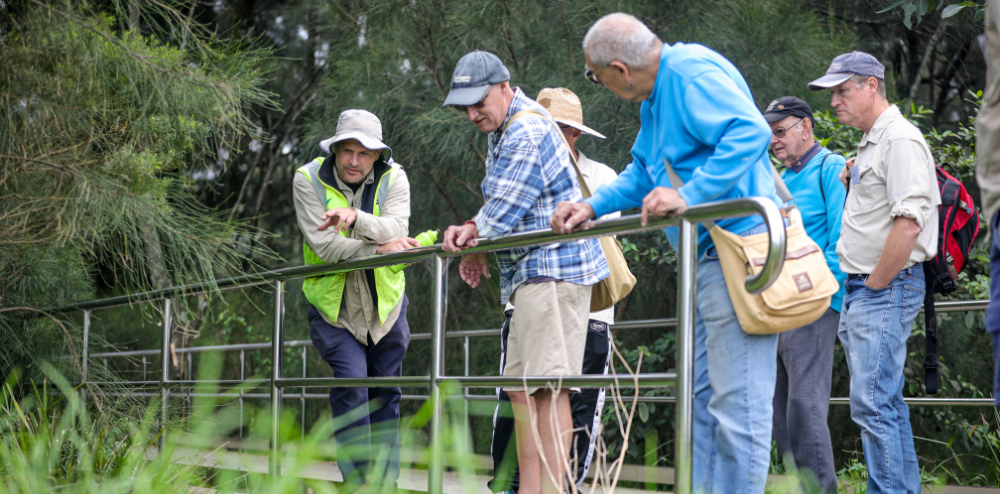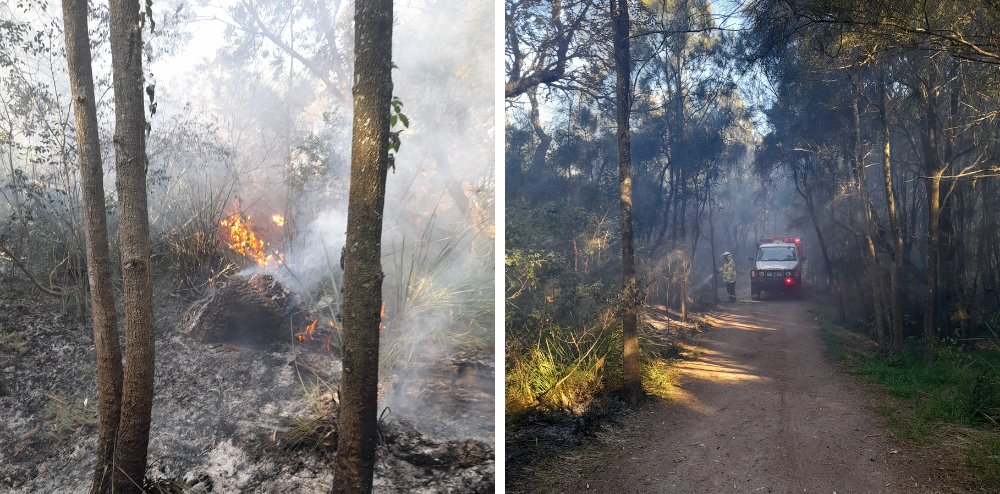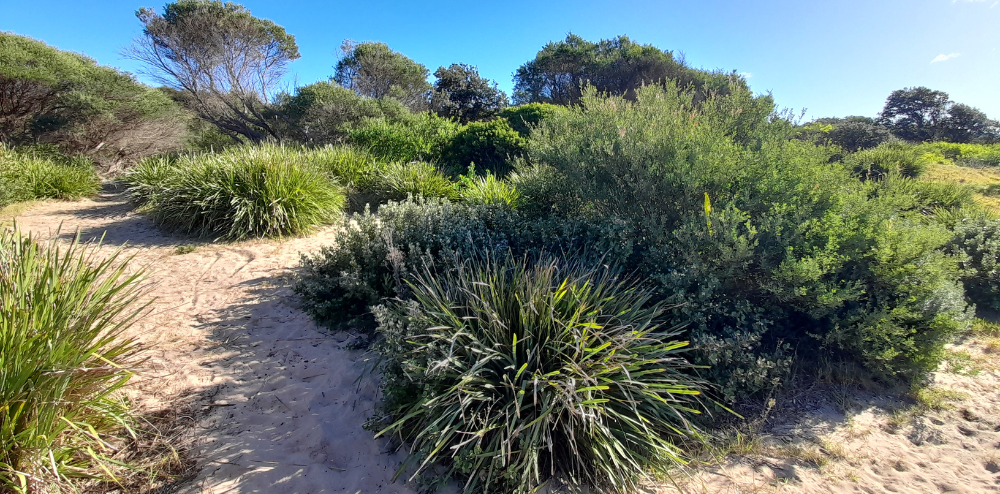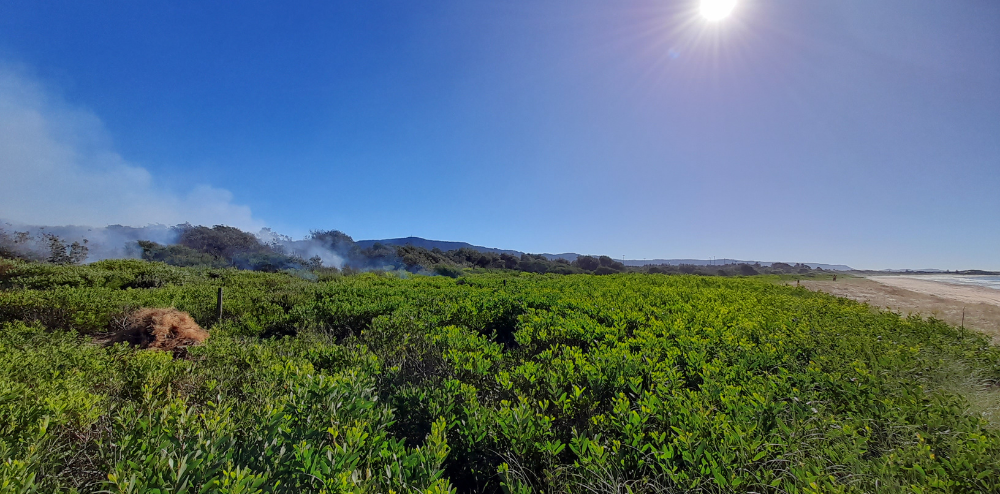Walk with me: Greg Fikkers takes us on a tour of Puckeys Estate
Smoke and the faint wisps of controlled fire are not ordinarily what you might want to see at Puckeys Estate in North Wollongong. However, a scheduled ecological burn is just one tool in the metaphorical toolbox used to conserve and manage the rare coastal habitat.
On Friday 16 June, Wollongong City Council joined forces with Fire and Rescue NSW and the Rural Fire Service to manage the controlled ecological burn at Puckeys Estate.
Why did Council need to do this? It’s because Australian plants are incredibly unique. Many plant species, including species found in Puckeys Estate, have evolved to cope with fire. Some plants need fire to flower and grow new seeds and the ecological burn is a way to manage this in a valuable landscape that is so close to the city centre.
For Greg Fikkers, Wollongong City Council’s Natural Areas Coordinator, caring for Puckeys Estate, and the plants and animals which call it home, is a balancing act.
 Image: Greg Fikkers [left] leading tour of Puckeys Estate for members of the Old Boys Social Club.
Image: Greg Fikkers [left] leading tour of Puckeys Estate for members of the Old Boys Social Club.
Tell us more about the ecological burn.
Greg – “The purpose of the burn is to replicate the natural burn regimes for vegetation within the reserve. Our native vegetation has, over thousands of years, adapted to fire. Some need fire to grow and propagate.
“The different plant species within Puckeys Estate have been assessed and some plants need a fire frequency of every 7 to 30 years.
“It’s exciting but tightly controlled work. Fire and Rescue NSW and the Rural Fire Service were on site to oversee the ecological burn. They’re the pros when it comes to managing something as dangerous as fire and we needed to make sure the conditions were just right. If there was too much wind for example, that can make a controlled fire turn into something more dangerous."
 Image: Puckeys Estate during the controlled ecological burn.
Image: Puckeys Estate during the controlled ecological burn.
“It’s important that we got the ecological burn just right as the fire needs to be at low to moderate intensity. It’s what we call a low and slow. This approach gives animals like birds, reptiles, and possums plenty of time to make a move to safer areas during the burn," he said.
“We’re also not burning every part of Puckeys Estate all at once! When we do an ecological burn, we target specific areas and exclude areas with plant species that do not require fire for their regenerative processes, such as endangered Hind-Dune Littoral Rainforest and Coastal Swamp Oak Forest found in Puckeys Reserve.
“What I find fascinating is that as we are planning future burns every 15 years or so, if you could zoom out and take a birds eye view, the areas would look like a mosaic pattern as we gradually burn sections in Puckeys Estate.”
Why does Puckeys Estate matter?
Greg – “Puckeys Estate is a fantastic Nature Reserve and one of the biggest natural areas left in our city. It’s actually an annex of Wollongong Botanic Garden and it falls under the responsibility of Wollongong City Council.
“Puckeys Estate is a rare coastal habitat that includes rainforest, dunes, and saltmarsh. It’s also home to over 100 different types of birds, and many endangered plant communities. Plant communities are a collection of plant species that interact with each other, animals, and the physical environment."
 Image: Puckeys Estate Reserve is an important natural area for the city.
Image: Puckeys Estate Reserve is an important natural area for the city.
“This area isn’t just important from an environmental perspective it also has incredible heritage value, especially to local Dharawal people who are the traditional Custodians of this land and have lived in this area for tens of thousands of years," he said.
“In the early 20th century, Puckeys Estate was once the site for an experimental salt mill which was owned by the late Courtney Puckey. You can still see some of the historic remains of the salt works and Puckey’s homestead at the southern end of the reserve.”
What sorts of animals can be found at Puckeys Estate?
Greg – “Puckeys provides important habitat to Ringtailed Possums, Bandicoots, native Swamp Rats, and Marsh Snakes. It is also home to a diverse number of birds, ranging from tiny Suburb Fairy Wrens, Red Browed Finches, Kingfishers to the large Powerful Owl, whose population is listed as vulnerable in NSW.”
Visit the Wollongong Botanic Garden website for more information about Puckeys Estate Nature Reserve.
Want more Council news?
Visit our News page to find out what's happening in your community, or sign up for e-news.

